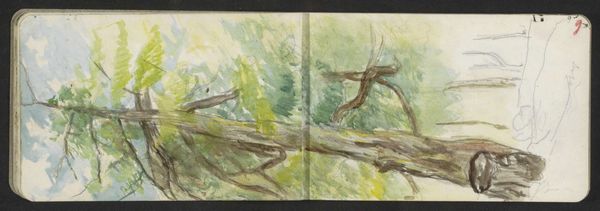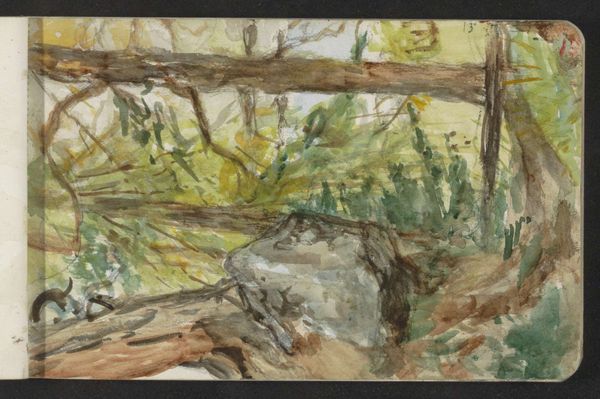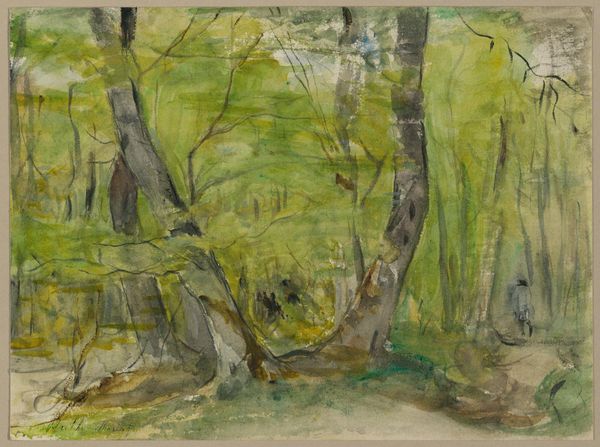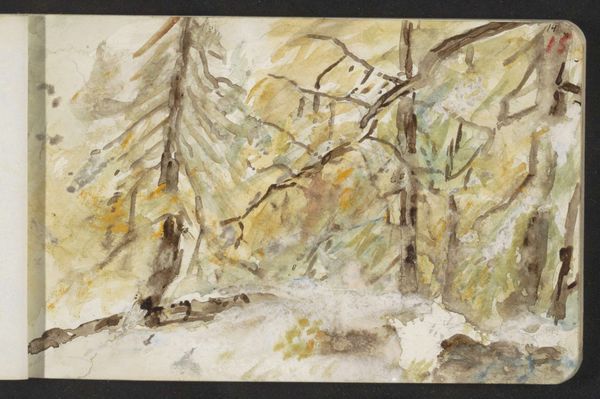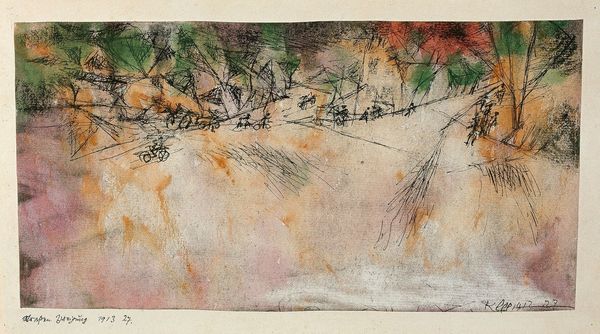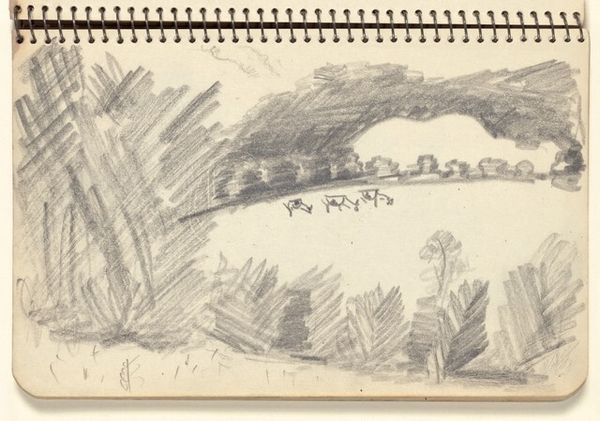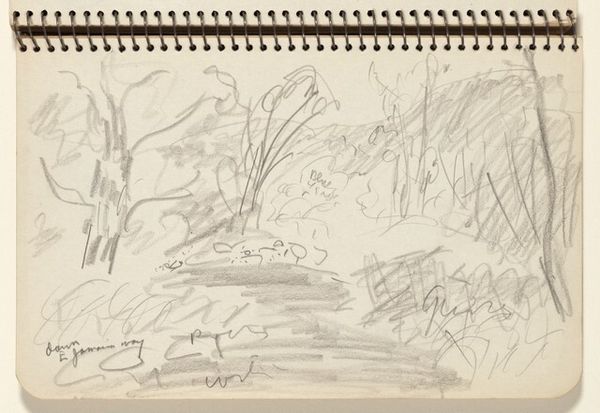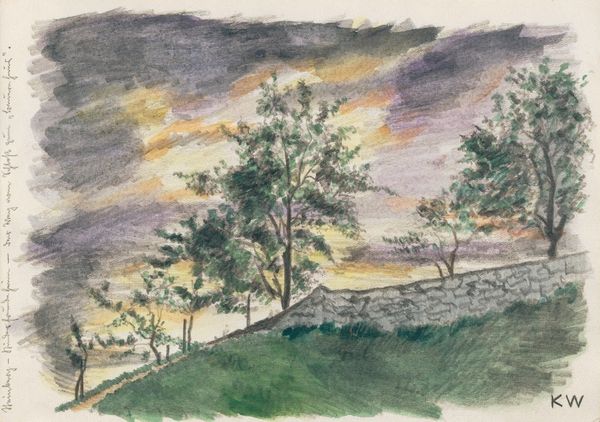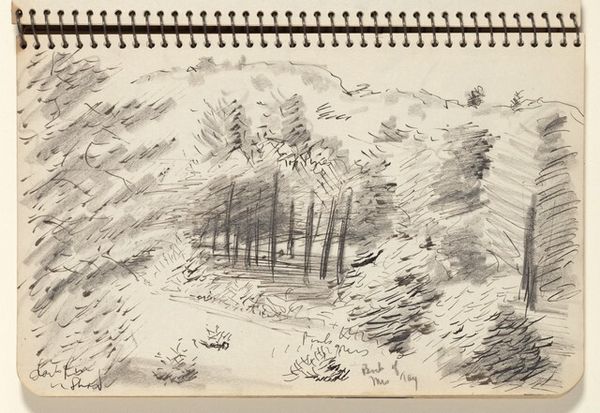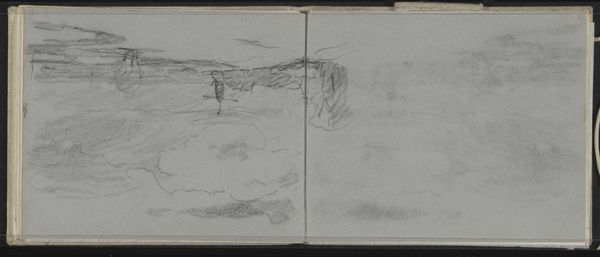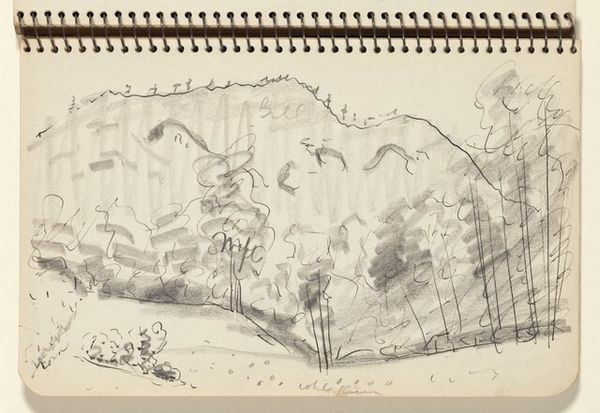
plein-air, watercolor
#
impressionism
#
plein-air
#
landscape
#
watercolor
#
coloured pencil
#
underpainting
Copyright: Rijks Museum: Open Domain
Curator: What a peaceful scene! The way light filters through the trees immediately sets a reflective mood. Editor: Yes, but it’s also so raw. Look at how economical the artist is, using watercolor and perhaps colored pencil on what seems to be a simple sketchbook page. There's no pretense here, just the act of seeing and recording. Curator: You're right. And if we look closely at Jozef Israëls’ "Bomen aan een waterkant in Pontresina," or "Trees by a Waterfront in Pontresina," created around 1869, we see an interesting dialogue. Israëls was known for his deeply evocative genre scenes, but this landscape captures something different, almost mystical. Editor: Mystical maybe, but think of the materiality! En Plein air, it looks like. He took his tools directly to the location. No fuss, capturing that instant impression of Pontresina directly, probably fighting the weather too. Curator: The immediate visual language is compelling; the underpainting seems to whisper of other possible images. Look at the symbolism of the water’s edge—a transitional space, a meeting of worlds. And those trees, sentinels guarding the threshold to the unknown. The image acts as a container for cultural memory, doesn't it? The light reflecting through the trees evokes a connection to time, and nature, a kind of spiritual grounding. Editor: Perhaps. I’m stuck on the speed of it all, though. To execute something like this on-site requires real dexterity. Imagine Israëls packing up his paints, choosing the right brush, reacting to the environment. Labor isn’t invisible in this picture. You can see it! Curator: Perhaps there’s an intersection. That manual labor becomes, in its translation to paper, a form of sacred act. In its essence, it’s less about what is seen and more about what we are asked to remember, the stories these scenes activate. Editor: Fair enough. The scene offers a humble look at a specific time and location, using immediate processes and natural materials—it’s more documentary than dream. Curator: For me, it illustrates the powerful capacity of landscape to hold not just our gazes, but also our shared past, fears, and hopes. Editor: Yes. For me, its about the artistic act itself – to represent that dream with speed and raw materiality.
Comments
No comments
Be the first to comment and join the conversation on the ultimate creative platform.
